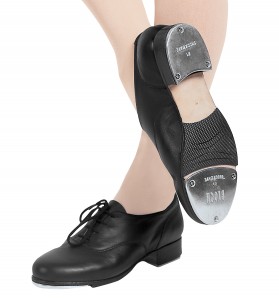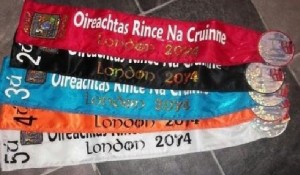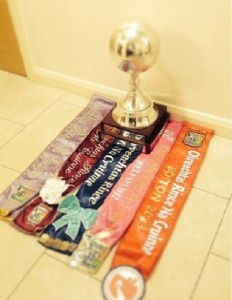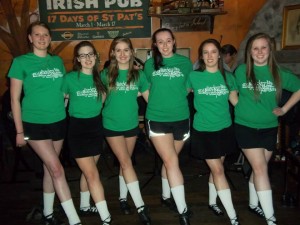Irish dance competitions can get kind of confusing. There are six levels: beginner, advanced beginner, novice, prizewinner, preliminary championship, and open championship. You can start competing in these levels at any age, and the competitions are divided up by the age you are on January 1st of the year you start. (for example if on January 1, 2014 you were 18, than you would be in the U19 age division.) In the first four levels (or grade levels) There is one judge and are four different dances in which you can compete: reel, slip jig, treble jig, and hornpipe. The dancer can chose what dances to compete but there are certain requirements to reach the next level of dance. In the two championship levels there are three judges and the dancer can no longer chose the dances they are assigned by age. In the preliminary championship level each dancer does a soft shoe round and heavy shoe round. The odd ages (U15, U17, etc.) do the dances slip jig and treble jig. The even ages (U12,U14, etc.) do the dances reel and hornpipe. The open championship level is the highest level possible in competition. Since this level is so difficult, they add a third round to every competition called the set dance. This is a completely customized dance where you can show off your style and technique to impress the judges.
Now that you know what every level consists of, you need to understand how to jump from level to level. In the beginner and advanced beginner, you only need to earn a 1st, 2nd, or 3rd place in every dance to move up o the next level. The awards at these levels are adjudicated so it can be very easy to earn a placement. The judge can chose o place everyone and so everyone could move up into the next level. Once you get to novice and prizewinner the rules change. The dancing gets better and the competition gets more serious. To move out of these to levels, you need a 1st place in all of the four rounds previously mentioned. Earlier I mentioned that you can chose what dances you perform, but why not do all dances if they’re required to move ingot he next level right? Not all dancers have the mind set to get to the championship levels and they just do it for the fun of competition. Now we get to the complicated part. The scoring completely changes in the championship level. This is where you can qualify for the North American Nationals or even the World Championships. The scoring in these competitions is no longer adjudicated. In a competition half of the dancers receive a placement. If there are 24 dancers in a competition, 12 girls receive a placement trophy. To move out of this level and into the open championship level you need to receive three 1st place awards. You may be wondering how this is controlled by the judges. How do they make their point system match up? (bare with me now.) There is a system called the irish point system. Every placement in the competition is given a certain amount of points (1st place is worth 100 points, 2nd place is worth 75 points, etc.) until you reach the last dancer and their points are 0. They rank the dancers by each judge and assign what points each judge has given. This is the number that matters to you. The RAW score number a judge gives you is not worth anything in comparison. One judge could give the first place dancer 65 points out of 100 for a round, and another judge could give the second place dancer 75 points out of 100 for the same round. 75 is higher than 65 but 1st place is higher than 2nd. Therefore, it doesn’t matter what exact number you get from each judge, it only matters where the judge ranks you in comparison to the other dancers. Do you have headache yet? I do., and it gets even better. Once you get into the open championship the competition gets really intense. They introduce round medals. This is where you find out what you rank in each individual round. At every competition they chose a random judges awards for rounds 1, 2, and 3 and read aloud the rankings. This can discourage some dancers because they find out that one judge didn’t place them in the top half for one round. This does not seal your fate. I have seen girls get a round medal in all rounds and not get an overall placement. It all depends on how your irish points fall with everyone else’s. Irish dance is a bit more complicated than you thought isn’t it?

 Riverdance is an amazing show that is famous for bringing the style of irish dance to America. Michael Flatley created this show and toured it all of the world for years. The thing that is not understood it that this is only a show. I do not river dance because that is not a thing. I could possibly perform in Riverdance, but I am not a river dancer. Its about time that people understand the true talent and hard work that it takes for irish dancers to do what we do. Don’t try to compare it to any other American sport. Irish dance is it’s own truly amazing art form that requires hard work and ridiculous strength. (ok I’m a little bias, but its true.)
Riverdance is an amazing show that is famous for bringing the style of irish dance to America. Michael Flatley created this show and toured it all of the world for years. The thing that is not understood it that this is only a show. I do not river dance because that is not a thing. I could possibly perform in Riverdance, but I am not a river dancer. Its about time that people understand the true talent and hard work that it takes for irish dancers to do what we do. Don’t try to compare it to any other American sport. Irish dance is it’s own truly amazing art form that requires hard work and ridiculous strength. (ok I’m a little bias, but its true.)


























